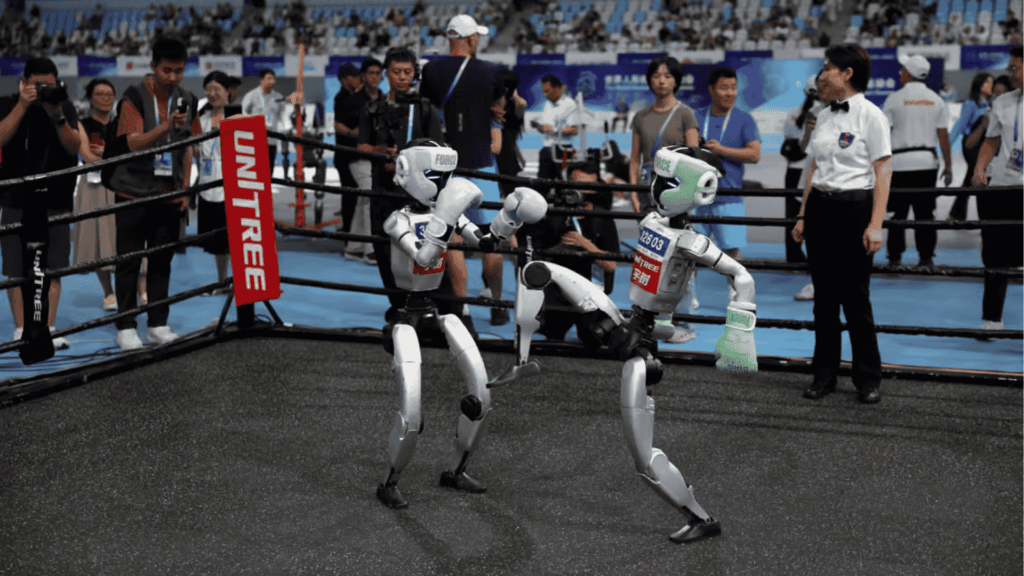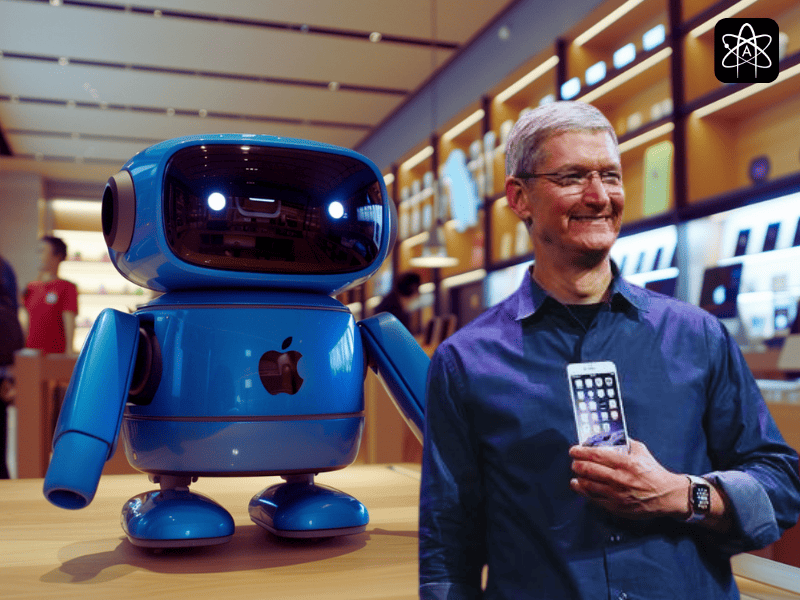Kickboxing is an amazing sport, and if it is not human figures who are fighting and exchanging blows, then who could it be? The kickboxing bots of Beijing recently took the centre stage at the inaugural World Humanoid Robot Games in Beijing. The final move was an attempted roundhouse kick that missed its target but sent the little fighter tumbling down, and the whole crowd cheered.
Unlike the traditional martial arts, these kickboxing matches were carried out with no risks or bruises. The kickboxing bots of Beijing stakes were about balance, battery life, and even the philosophical questions of what robots represent in human society. In the 12,000-seat National Speed Skating Oval that was built for 2022 Winter Olympics, Chinese universities showed off their humanoid robots as well.
The event was more than just entertainment and showcased a statement that China is betting big on artificial intelligence. From kickboxing bots of Beijing to dancing performances, humanoid robots took the stage and symbolised the country’s ambition to lead the next wave of robotics and artificial intelligence happening in the world.

Humanoid Robots Competitors
The World Humanoid Robot Games featured a lot of competitors beyond just kickboxing and martial arts. There were several humanoid robots competitors and these performances captivated the audience but they revealed the hurdles that engineers faced. In one of the events, a robot had to drop out of the 1500-meter race after its head fell off in between the race. Students like Wang Ziyi from Beijing Union University explained her challenges to keep the robot’s head balanced.
For spectators like Hong Yun who is a retired engineer, the games were more than just novelty and explained how seeing the robots race was much more exciting than seeing real humans. The sentiment reflects how the humanoid robots event was successful and tapped into the public’s imagination, and made robotics more accessible and thrilling. But beneath this humour and spectacle, there is a deeper geopolitical purpose as well as it would help China attract more audience towards humanoid robots.
A National Strategy of AI
The focus on kickboxing bots of Beijing is not accidental as embodied AI was singled out in China’s government work report as a priority industry. After the 2025 Spring Festival Gala, where dancing humanoid robots captured a lot of attention, the government has accelerated investments in this sector of robotics. Cities like Beijing and Shanghai have launched massive robotics funds worth 10 billion yuan each.
The Bank of China has also announced plans for 1 trillion yuan in financial support for artificial intelligence industries over the next five years. This is the kind of institutional backing that reflects how serious China is about humanoid robotics and its future. The US-China technological rivalry has also intensified, and hence, China is focusing on real-world applications like humanoid robots.
According to us, humanoid robots are not just machines, and the kickboxing bots of Beijing are symbols of national ambition, competitiveness, and technological resilience. By investing in embodied AI, China is signaling that the country wants to shape the future of robotics and global artificial intelligence applications.
Read More: Workday Acquires Flowise to Power the Next Generation of AI Agents in 2025
Read More: Salesforce Ventures Datumo Investment of $15.5M for the New Future
Kickboxing Bots of Beijing
The kickboxing bots of Beijing were not just about technology; they were about inspiring the next generation. Parents like Zhan Guangtao brought their children to see the humanoid robots in action and believed that the exposure to hi-tech innovation would broaden their horizons. The public enthusiasm towards kickboxing bots of Beijing is the key to sustaining the industry.
The skepticism towards the humanoid robots and kickboxing bots of Beijing is justified. Experts argue that the home will likely be the one of the last that they would place humanoid robots due to safety concerns. China is determined to push humanoid robots from the stage into society and one way to do this was through kickboxing bots of Beijing at the event.



